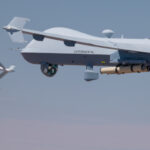Still-Developing Missile Defense Programs May Be Cut In Half, Franks Cautions Such Deep Cuts Would Echo Attempts To Eviscerate ABL, KEI, EMD Programs In Budgets; Hearing Set For Wednesday As President Obama continues preparing his first federal budget, and some Democrats in Congress search for programs to reduce, outlays for U.S. ballistic missile defense may be cut deeply, according to Rep. Trent Franks (R-Ariz.), a member of the House Armed Services Committee (HASC). Franks spoke in a Defense Daily/Access Intelligence…
Contract Updates
USTRANSCOM has awarded a firm-fixed price (indefinite-delivery, indefinite-quantity contract) – $10,915,926.84,
USTRANSCOM has awarded a firm-fixed price, indefinite-delivery, indefinite-quantity contract, with a face value of $10,915,926.84, to SSA Atlantic LLC, Jacksonville, Florida, (HTC71126DE119). This contract provides Stevedoring and Related Terminal Services (S&RTS) in Florida, at the Ports of Jacksonville. The base…
The Boeing Co. (Ridley Park, Pennsylvania) – $183,163,191.00
The Boeing Co., Ridley Park, Pennsylvania, was awarded a $183,163,191.00 Firm-Fixed Price delivery order modification (Contract Number W91215-16-G-000 H9224122F0002 P00004) for procurement of H-47ER Rotary Wing Aircraft in support of United Kingdom Foreign Military Sales through U.S. Special Operations Command.…
CORRECTION: The contract announced on Dec. 15 2025 (for Southeastern Kentucky Rehabilitation Industries, Corbin) – $14,312,903
CORRECTION: The contract announced on Dec. 15, 2025, for Southeastern Kentucky Rehabilitation Industries,* Corbin, Kentucky (SPE1C1-24-D-N017) for $14,312,903 was announced with an incorrect award date. The correct award date is Dec. 17, 2025.
RGAS LLC (Houston, Texas) – $16,477,807
RGAS LLC,** Houston, Texas, has been awarded a maximum $16,477,807 firm-fixed-price, indefinite-delivery/indefinite-quantity contract under solicitation SPE4A7-25-R-0788 for various hydrofluorocarbon carbon gases. This was a competitive acquisition with five responses received. This is a one-year base contract with two one-year option…













